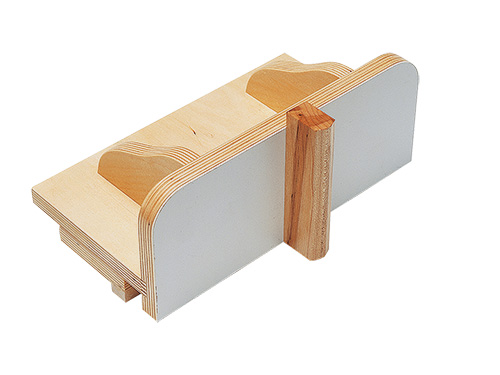
I have a nice 14-inch band saw that I purchased new. I have an assortment of blades. But no matter what size blade I use, my work always drifts from the fence. I have even used a second fence to keep the blade from drifting. I have the set just above the workpiece. I have the blade guide almost tight with the teeth just beyond them. The rollers are up against the back of the blade. What am I missing?
Ellis Walentine: You’re missing the microscopic differences between the set and sharpness of the teeth on opposite sides of the blade. If the teeth on one side stick out more or are sharper, the blade will tend to lead in that direction, skewing it in the cut and putting lateral pressure on the work that makes it want to move away from your fence.
There are a couple of ways to deal with this well-known phenomenon. One is to make your own fence — essentially two pieces of plywood at right angles to each other. Make a few test cuts in scrap and see which way the blade drifts and what angle you have to push the work through to counteract it. Clamp your homemade fence to the table at this angle, and your drifting problem should be solved.
Another alternative that many people prefer is the “single-point” fence, essentially a vertical edge clamped at right angles to the table and parallel to the blade, even with the teeth. You apply pressure against the opposite side of your workpiece to hold it against the single-point fence, and manually course-correct for drift as you go. It’s actually pretty easy once you get the hang of it. I like to squint my eyes and look at the kerf directly behind the blade, adjusting the direction of the workpiece to keep the trailing edge of the blade centered in the kerf.
Lee Grindinger: It sounds like your fence and your blade are in disagreement over the perfect line. This is common among band saws. Place your widest blade on the saw. Freehand a straight cut, keeping the back of the blade perfectly centered in the kerf. This is the line to set your fence parallel to, not the groove in the table. When you are ripping, it’s very important to go slow enough so the blade can clear waste. A fast feed rate will cause the blade to wander. A dull blade will wander. Check the way your blades are stored as a possible cause of damage to your blades. Hanging from a wall is best, laid flat is the worst.
Michael Dresdner: You’re missing the fact that blades deflect because of heat. As the friction from cutting builds up on the blade, the front edge (the teeth portion) heats up more than the back of the blade. As it heats, it expands. If the front edge expands more than the back, it becomes slightly longer, but because it is attached to the back, this manifests itself by causing the blade to warp outward or inward — resulting in a drifting cut.
I’ve found that some of the low tension band saw blades, such as the Timberwolf, www.suffolkmachinery.com, can help eliminate the problem. In one of the guitar companies I ran, we used a 4″ wide re-saw band saw, and to prevent front heating, we outfitted it with a vortex tube to blow cold air on the front of the blade while it was running.






